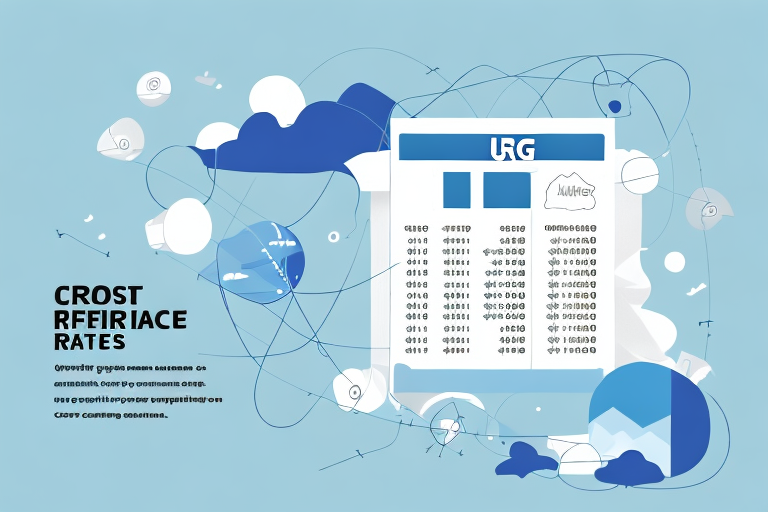Understanding Insurance Rates for UPS Shipping
Shipping goods with UPS is a reliable choice for many businesses and individuals. However, ensuring your shipments are protected against loss or damage is crucial. UPS offers a variety of insurance options tailored to different needs, and understanding how insurance rates are calculated can help you make informed decisions. This article provides an in-depth analysis of UPS insurance rates, the factors influencing them, and tips to optimize your shipping insurance.
Why You Need Insurance for Your UPS Shipments
While UPS is known for its dependable service, unforeseen events can lead to lost or damaged packages. Without proper insurance, you risk losing the value of your shipment. UPS provides limited liability coverage by default, but additional insurance offers enhanced protection.
Having insurance coverage also helps maintain positive relationships with your customers. In the event of a shipment mishap, you can reimburse your customers efficiently, preventing disputes and safeguarding your reputation.
Moreover, insurance provides peace of mind, allowing you to focus on other aspects of your business without worrying about potential financial losses due to shipping incidents.
Different Types of Insurance Coverage for UPS Shipping
UPS offers multiple insurance options to suit various shipping needs:
- Declared Value Coverage: Automatically included with every UPS shipment, this basic coverage offers protection up to $100. Additional coverage can be purchased for higher-value items.
- Full Value Coverage: Provides comprehensive protection for the declared value of your shipment, up to $50,000. Ideal for high-value or fragile items.
- International Insurance: Designed for shipments outside the United States, this coverage protects against loss, damage, or delays during transit.
- UPS Proactive Response Secure Service: Offers extensive protection for high-value and time-sensitive shipments, including proactive monitoring and risk assessment.
- UPS Capital Cargo Finance: Provides financing solutions for businesses shipping high-value goods, combining insurance coverage with financial support.
Factors Affecting UPS Insurance Rates
The cost of UPS insurance coverage is influenced by several factors:
- Declared Value: Higher declared values result in higher insurance premiums.
- Shipping Destination: International shipments may incur different rates compared to domestic ones.
- Shipping Method: Ground services typically cost less than air delivery options.
- Item Type: Fragile or high-risk items, such as electronics or glassware, may increase insurance costs due to the higher risk of damage.
Additionally, UPS assesses the packaging quality and labeling to minimize risks, potentially affecting insurance rates based on the perceived safety of the shipment.
How to Calculate Your UPS Shipping Insurance Cost
Calculating UPS insurance costs involves determining the declared value of your shipment. The insurance fee is usually a percentage of this value. For instance, a shipment valued at $500 might incur an additional $8 in insurance fees.
UPS also offers various supplementary insurance options, such as:
- Declared Value Coverage: Allows declaring a value higher than the item's actual price for added protection.
- Accessorial Coverage: Provides specific protections for items like fine art or jewelry, with costs varying based on item type and declared value.
The Benefits of Declaring a Higher Value for Your Shipment
Declaring a higher value for your UPS shipment ensures more comprehensive coverage, which can be crucial for high-value items. While this increases the insurance rate, it guarantees that you can recover the full value in case of loss or damage.
Moreover, a higher declared value can act as a deterrent against theft or mishandling, as UPS and its handlers are more vigilant with valuable shipments. It's essential, however, to declare the actual value based on the shipment's contents to avoid discrepancies during claims.
Tips for Reducing Your UPS Shipping Insurance Premiums
Managing insurance costs effectively can lead to significant savings. Consider the following strategies:
- Accurate Valuation: Only declare the necessary value to cover your shipment, avoiding over-declaration.
- Proper Packaging: Secure and adequately package items to reduce the risk of damage, potentially lowering insurance rates.
- Choose Ground Shipping: Opt for ground services over air delivery when possible to benefit from lower insurance costs.
Additionally, negotiating directly with UPS for high-volume shipments or exploring third-party insurance providers can offer competitive rates. For more information on managing UPS shipping insurance, visit UPS Shipping.
What Happens if Your Shipment is Lost or Damaged?
In the unfortunate event of a lost or damaged UPS shipment, it is crucial to file a claim promptly. Claims can be submitted online or through UPS customer service. UPS will investigate the claim and work towards a resolution swiftly.
If your shipment was insured, you will receive reimbursement for the declared value, provided all claim guidelines are met. Ensure you have necessary documentation, such as receipts or invoices, to support your claim.
Understanding UPS's claim process and adhering to its guidelines can facilitate a smooth reimbursement experience. For detailed guidelines, refer to UPS's official insurance policies.
How to File an Insurance Claim for Your UPS Shipment
Filing an insurance claim with UPS requires the following information:
- Tracking number of the shipment
- Declared value of the shipment
- Proof of value, such as receipts or invoices
- Photographs of any damages
Claims can be submitted online through the UPS website or by contacting UPS customer service directly. Ensure all required documentation is provided to expedite the claim process.
Be aware of UPS's limitations and exclusions in their insurance coverage. Items like jewelry, artwork, and antiques may have specific restrictions or require additional insurance coverage. Always review UPS's insurance policies before shipping valuable items.
Common Mistakes to Avoid When Insuring Your UPS Shipment
Avoiding common pitfalls can ensure that your insurance coverage remains valid and effective:
- Over-declaring Value: Inflating the declared value to reduce insurance fees can lead to claim denial.
- Poor Packaging: Inadequate packaging increases the risk of damage and may affect insurance claims.
- Neglecting Shipment Tracking: Failing to monitor your shipment can result in missing critical updates and delays in fixing issues.
Additionally, understanding the limitations of your insurance coverage is vital. Read the terms and conditions carefully to be aware of any exclusions or restrictions. Proper documentation, such as item photos and detailed inventories, can also aid in a smoother claims process.
By avoiding these mistakes and ensuring thorough coverage, you can protect your shipments effectively and maintain trust with your customers.
Conclusion
Understanding UPS insurance rates and the factors that influence them is essential for safeguarding your shipments. By selecting the appropriate coverage, accurately declaring shipment values, and adhering to best practices, you can minimize risks and manage insurance costs effectively. For more detailed guidance and the latest updates on UPS shipping insurance, visit the official ShipScience website.






















